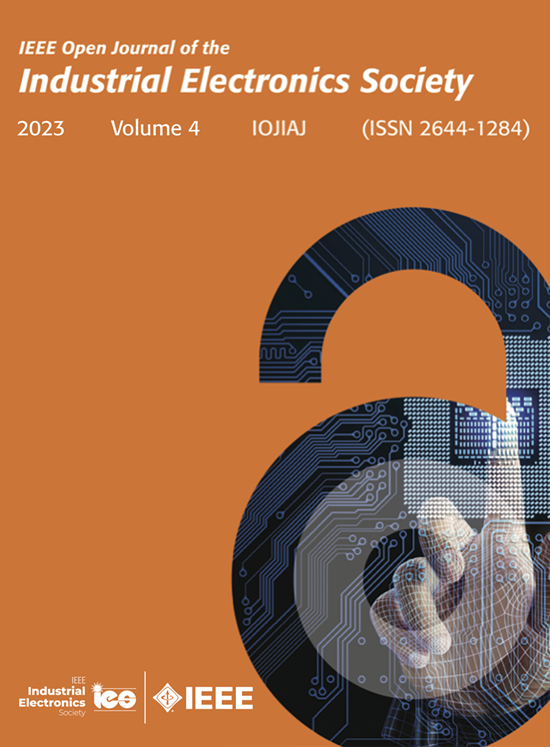Grid Forming Converters for Low Inertia Systems-Capabilities and Limitations: A Critical Review
IF 4.3
Q1 ENGINEERING, ELECTRICAL & ELECTRONIC
IEEE Open Journal of the Industrial Electronics Society
Pub Date : 2025-03-01
DOI:10.1109/OJIES.2025.3566213
引用次数: 0
Abstract
The rapid integration of renewable energy sources into the power grid has resulted in the high utilization of power-electronics devices and operating power systems where inverter-based resources are dominated. Such a transition has led to a reduction of inertia and system strength. In recent research, grid-forming converters (GFM) are introduced and developed to alleviate the grid-following converter (GFL) functionalities and to address the limitations concerning grid support capability, stability, and synchronization issues. However, the efficacy of GFM technology is still under investigation, and the level at which GFM converters can replace traditional GFLs is still under question. This article aims to bridge the gap in literature by revisiting the up-to-date research on the capabilities and the limitations of the proposed GFM converters compared to the traditionally utilized GFL converters, allowing a better understanding of the current status and future requirements. This includes the GFM converter's topologies and their performance for small- and large-signal stability issues, the GFM converters' ability to enhance grid synchronization, and transient stability performances. Furthermore, the challenges and limitations of the dynamic behavior of GFM converters from the point of view of fault ride through (FRT) capability, including grid codes and FRT requirements, FRT methods of GFM converters, postfault behavior, and open research directions, are also comprehensively reviewed. Finally, this article has been concluded by highlighting the main findings, considerations, and future recommendations.用于低惯量系统的栅格成形变流器——能力和局限性:评述
可再生能源与电网的快速整合,使得以逆变器资源为主的电力电子设备和运行电力系统得到了高利用率。这种转变导致了惯性和系统强度的降低。在最近的研究中,网格形成转换器(GFM)被引入和开发,以减轻电网跟随转换器(GFL)的功能,并解决电网支持能力,稳定性和同步问题的局限性。然而,GFM技术的有效性仍在调查中,GFM转换器取代传统gfl的水平仍存在疑问。本文旨在通过与传统使用的GFL转换器相比,重新审视关于所提出的GFM转换器的功能和局限性的最新研究,弥合文献中的差距,从而更好地了解当前状态和未来需求。这包括GFM转换器的拓扑结构及其在小信号和大信号稳定性问题上的性能,GFM转换器增强电网同步的能力,以及瞬态稳定性能。此外,从故障穿越能力的角度,综述了GFM变流器动态行为的挑战和局限性,包括电网规范和FRT要求、GFM变流器的FRT方法、故障后行为以及开放的研究方向。最后,本文总结了主要的发现、注意事项和未来的建议。
本文章由计算机程序翻译,如有差异,请以英文原文为准。
求助全文
约1分钟内获得全文
求助全文
来源期刊

IEEE Open Journal of the Industrial Electronics Society
ENGINEERING, ELECTRICAL & ELECTRONIC-
CiteScore
10.80
自引率
2.40%
发文量
33
审稿时长
12 weeks
期刊介绍:
The IEEE Open Journal of the Industrial Electronics Society is dedicated to advancing information-intensive, knowledge-based automation, and digitalization, aiming to enhance various industrial and infrastructural ecosystems including energy, mobility, health, and home/building infrastructure. Encompassing a range of techniques leveraging data and information acquisition, analysis, manipulation, and distribution, the journal strives to achieve greater flexibility, efficiency, effectiveness, reliability, and security within digitalized and networked environments.
Our scope provides a platform for discourse and dissemination of the latest developments in numerous research and innovation areas. These include electrical components and systems, smart grids, industrial cyber-physical systems, motion control, robotics and mechatronics, sensors and actuators, factory and building communication and automation, industrial digitalization, flexible and reconfigurable manufacturing, assistant systems, industrial applications of artificial intelligence and data science, as well as the implementation of machine learning, artificial neural networks, and fuzzy logic. Additionally, we explore human factors in digitalized and networked ecosystems. Join us in exploring and shaping the future of industrial electronics and digitalization.
 求助内容:
求助内容: 应助结果提醒方式:
应助结果提醒方式:


